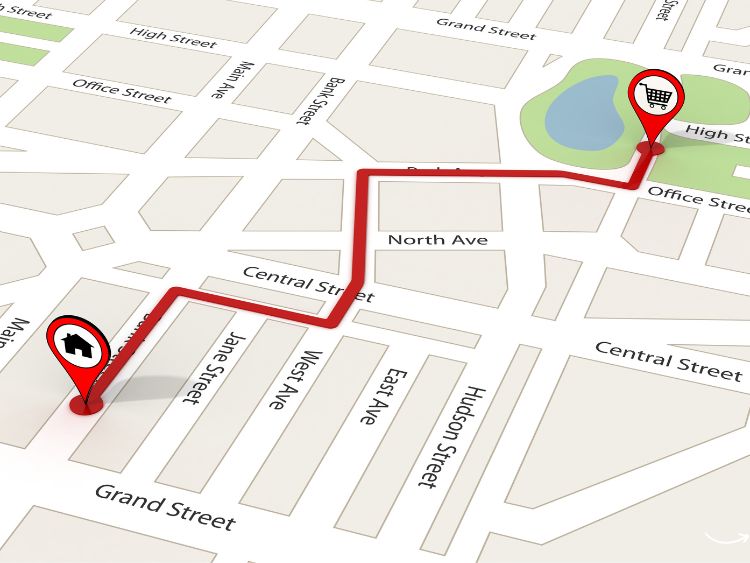The story of Moses is one of the most iconic and enduring narratives in religious history. His journey, as chronicled in the Bible, is a tale of faith, leadership, and perseverance. For centuries, believers and scholars alike have sought to trace the path of Moses and the Israelites as they journeyed from Egypt to the Promised Land. The “Moses journey map” is not just a geographical outline; it’s a spiritual odyssey that has captivated generations. In this article, we will delve into the significant locations, events, and lessons that define this epic journey.
Understanding the Exodus: The Beginning of Moses’ Journey
The journey of Moses begins in Egypt, where the Israelites were enslaved under the rule of Pharaoh. Moses, born into an Israelite family, was saved from infanticide and raised in the Pharaoh’s palace. However, as he grew older, he became increasingly aware of the suffering of his people.
- Egypt – The Land of Bondage: The map of Moses’ journey starts in Egypt, specifically in the land of Goshen. This fertile region was where the Israelites lived and worked under harsh conditions. The “Moses journey map” marks this as the place of origin, a land of oppression that Moses would eventually lead his people out of.
- The Burning Bush – A Divine Encounter: Moses’ journey truly begins when he encounters the burning bush on Mount Horeb, also known as Mount Sinai. This event is pivotal as God speaks to Moses, instructing him to return to Egypt and lead the Israelites to freedom. This marks the first significant point on the “Moses journey map,” symbolizing the divine mandate that drives the entire exodus narrative.
The Exodus: Key Stops on the Moses Journey Map
As Moses leads the Israelites out of Egypt, several key locations become integral to understanding the journey. These places are not just physical locations but also hold deep spiritual significance.
- Crossing the Red Sea – A Miraculous Escape: One of the most famous events in Moses’ journey is the crossing of the Red Sea. Trapped between the pursuing Egyptian army and the vast expanse of water, the Israelites witnessed a miraculous event as the sea parted, allowing them to cross on dry land. The “Moses journey map” highlights this as a moment of divine intervention, demonstrating God’s power and protection.
- Marah – The Bitter Waters: After crossing the Red Sea, the Israelites traveled through the desert, eventually arriving at Marah. Here, they encountered bitter waters, which were undrinkable. Moses, guided by God, threw a piece of wood into the water, making it sweet and drinkable. This stop on the “Moses journey map” teaches a lesson about trust and divine provision.
- Mount Sinai – The Covenant with God: Perhaps the most significant stop on the “Moses journey map” is Mount Sinai. It is here that Moses received the Ten Commandments, a set of laws that would define the relationship between God and the Israelites. This moment solidifies Moses’ role as a leader and prophet, and it establishes the moral and ethical foundation of the Israelite community.
The Wilderness Wanderings: Lessons in Faith and Obedience
The journey from Egypt to the Promised Land was not a direct route. Instead, the Israelites wandered in the wilderness for 40 years. This period is marked by trials, lessons, and moments of both faith and disobedience.
- The Wilderness of Sin – Manna from Heaven: In the wilderness, the Israelites faced hunger and began to doubt their decision to leave Egypt. God responded by providing manna from heaven, a daily sustenance that would feed them throughout their journey. This stop on the “Moses journey map” is a reminder of God’s provision and the importance of trust, even in the most challenging circumstances.
- Rephidim – Water from the Rock: At Rephidim, the Israelites again faced a crisis, this time due to a lack of water. Moses, following God’s instructions, struck a rock, and water miraculously flowed out. This event, marked on the “Moses journey map,” symbolizes God’s ongoing care and the necessity of faith, even when resources seem scarce.
- The Golden Calf – A Moment of Rebellion: While Moses was on Mount Sinai receiving the Ten Commandments, the Israelites grew impatient and created a golden calf to worship. This act of idolatry led to severe consequences, highlighting the dangers of turning away from God. The “Moses journey map” here serves as a cautionary tale about the importance of obedience and faithfulness.
The Final Leg: Entering the Promised Land
After decades of wandering, the Israelites finally approached the Promised Land. However, Moses himself would not enter, as a consequence of his actions earlier in the journey.
- The Plains of Moab – Moses’ Farewell: The final stop on the “Moses journey map” is the Plains of Moab, where Moses delivered his farewell address. Here, he recounted the journey, reminded the Israelites of their covenant with God, and appointed Joshua as his successor. Moses’ journey ends here, as he views the Promised Land from a distance but is not permitted to enter.
- Mount Nebo – The Death of Moses: Moses’ life concludes on Mount Nebo, where he gazes upon the Promised Land before passing away. This point on the “Moses journey map” is both poignant and powerful, marking the end of an extraordinary journey that shaped the destiny of a nation.
FAQs about Moses’ Journey Map
- Why did the Israelites wander for 40 years? The Israelites wandered for 40 years as a result of their disobedience and lack of faith. This period served as both a punishment and a time for the generation that left Egypt to pass, making way for a new generation to enter the Promised Land.
- How many stops are recorded on Moses’ journey map? While the exact number of stops can vary depending on interpretation, the Bible records several key locations, including Mount Sinai, Rephidim, and the Plains of Moab, among others.
- Did Moses ever enter the Promised Land? No, Moses was not allowed to enter the Promised Land due to an earlier act of disobedience. He was, however, permitted to view it from Mount Nebo before he died.
- What is the significance of the Ten Commandments in Moses’ journey? The Ten Commandments, given to Moses at Mount Sinai, are central to the covenant between God and the Israelites. They establish the moral and ethical code that would guide the Israelite community.
Summary: The Legacy of Moses’ Journey
The “Moses journey map” is more than just a geographical route; it is a spiritual journey filled with lessons in faith, obedience, and leadership. From the moment Moses encountered the burning bush to his final view of the Promised Land, each step of the journey carries deep significance. For believers, Moses’ journey is a powerful reminder of God’s guidance, the importance of trust, and the enduring legacy of one of history’s greatest leaders.
Authoritative Links:
- https://www.biblegateway.com
- https://www.biblicalarchaeology.org
- https://www.jewishencyclopedia.com
- https://www.britannica.com
This article not only traces the physical steps of Moses but also explores the spiritual and moral lessons embedded in each stop along the way. The “Moses journey map” serves as a guide, not just for understanding the past, but for navigating the challenges of faith and leadership in the present.







